Question
Issue: How to fix Windows Error Reporting (WerFault.exe) high CPU in Windows?
Hello. My Windows PC is very slow and laggy. I noticed that a WerFault.exe in the Task Manager is using high amounts of CPU power. How do I fix this?
Solved Answer
When an application or system error occurs, Windows Error Reporting (WerFault.exe) is a built-in Windows service that automatically collects and sends error reports to Microsoft. This service's goal is to assist Microsoft in improving its products and providing better support to Windows users.
However, some Windows users have reported that WerFault.exe can cause excessive CPU[1] usage, slowing down their computers and causing other problems. This problem can occur if the service becomes stuck in a loop or tries to send an error report for an application that is no longer installed or in use.
High CPU usage for an extended period of time can be harmful to the computer because it can cause the system to overheat, causing hardware components such as the CPU, RAM, and hard drive to fail. Furthermore, it has the potential to cause the computer to freeze or crash, resulting in data loss or corruption.
Disabling the Windows Error Reporting service, updating or reinstalling drivers, running a virus scan, and cleaning up temporary files and other system junk are all possible solutions to this problem. It should be noted that these methods may not work for everyone, and users should exercise caution when modifying their system settings.
In this guide, you will find 7 steps that should help you fix Windows Error Reporting (WerFault.exe) high CPU in Windows. Keep in mind that the manual troubleshooting process may be lengthy. Try a maintenance tool like FortectMac Washing Machine X9 that can fix most system errors, BSODs,[2] corrupted files, and registry[3] issues. Otherwise, follow the step-by-step instructions below.
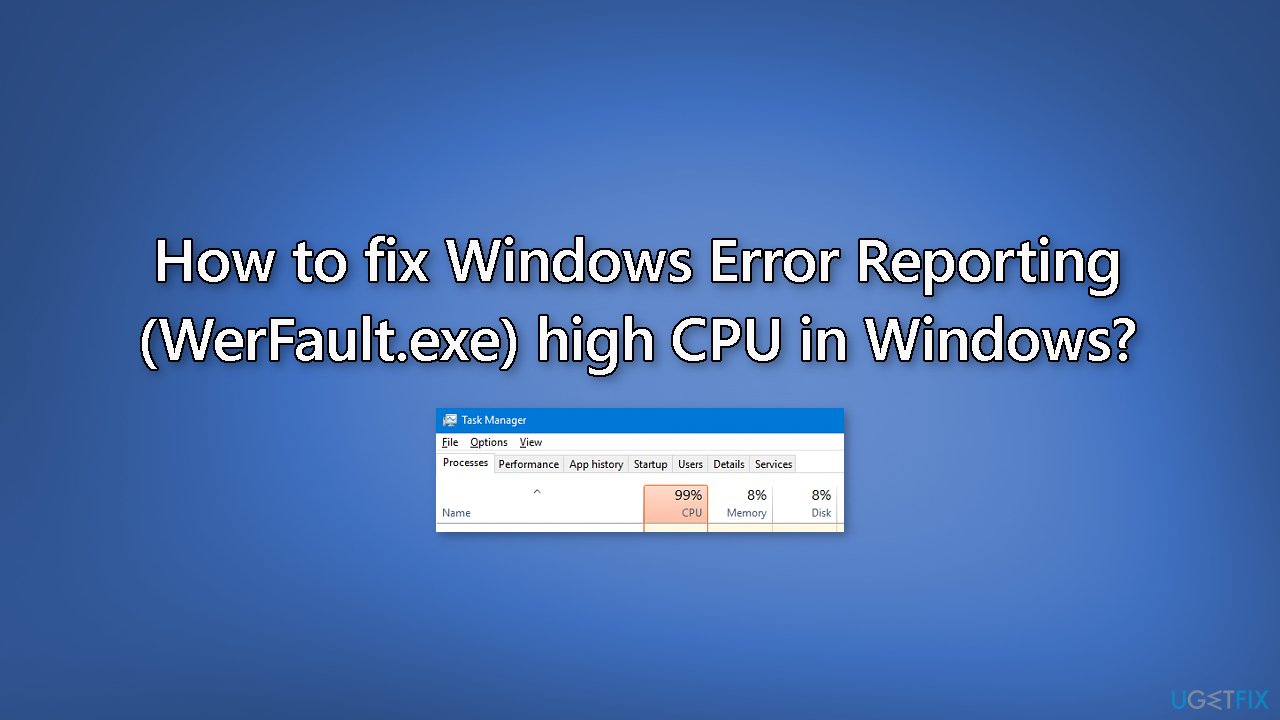
Method 1. End the WerFault.exe Process
- Open Task Manager by pressing the Ctrl + Shift + Esc keys or by right-clicking the Windows Start menu and selecting Task Manager from the context menu
- Once Task Manager opens, find the werfault.exe process in the list of running processes
- Right-click on the werfault.exe process
- In the context menu that appears, select End task to terminate the process
- If prompted with a confirmation dialog box, click End process to confirm that you want to terminate the process
Method 2. Fix Corrupted System Files
Use Command Prompt commands to repair system file corruption:
- Open Command Prompt as administrator
- Use the following command and press Enter:
sfc /scannow
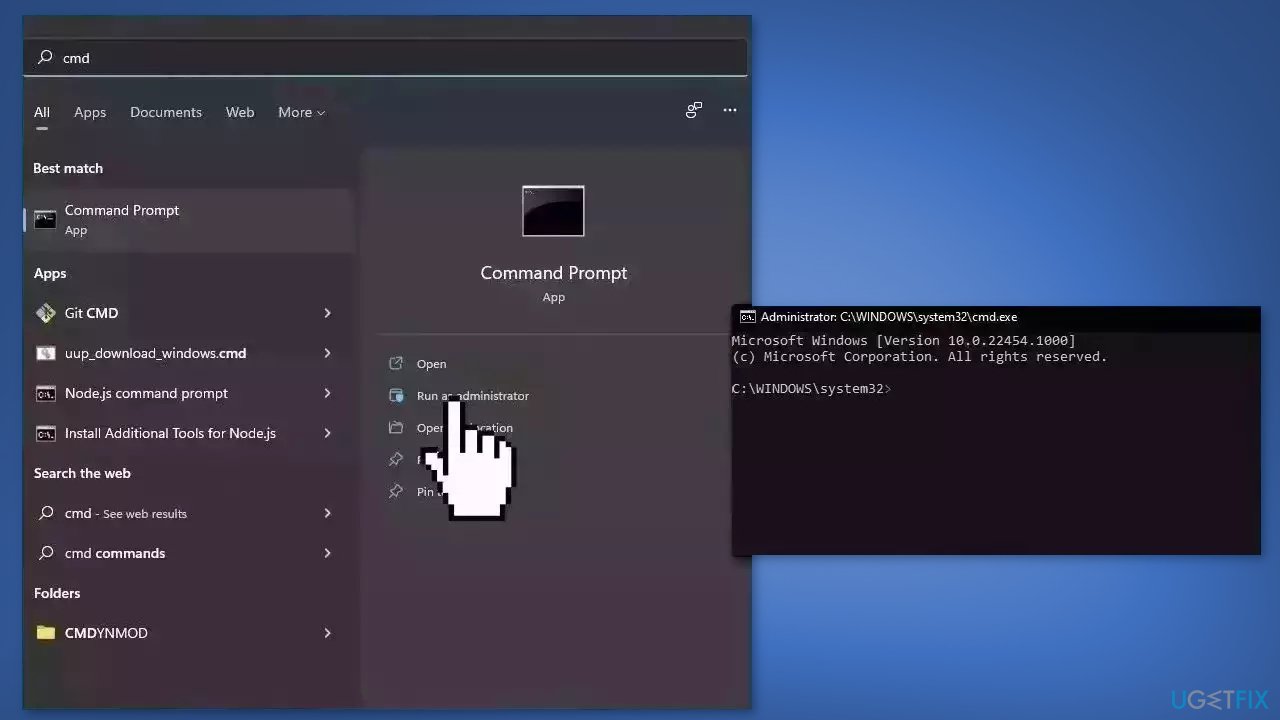
- Reboot your system
- If SFC returned an error, then use the following command lines, pressing Enter after each:
DISM /Online /Cleanup-Image /CheckHealth
DISM /Online /Cleanup-Image /ScanHealth
DISM /Online /Cleanup-Image /RestoreHealth
Method 3. Perform a Microsoft Defender Scan
It is possible that a malware infection may be the cause of WerFault.exe using high amounts of CPU. It is important to run a comprehensive security scan to rule out this possibility and ensure that the computer is not infected. This can help to prevent further issues with the Windows operating system and ensure that it is functioning properly.
If you have access to a security scanner, or if your organization pays for one, you can use it to scan your entire system to check for a virus infection. Otherwise, you can use Windows Defender to scan your system:
- Click on the Windows Start menu or press the Windows key on your keyboard
- Type Microsoft Defender in the search bar and click on Microsoft Defender Antivirus to open the application
- Click on the Virus & threat protection option in the left-hand menu
- Click on the Quick scan or Full scan option, depending on your preference
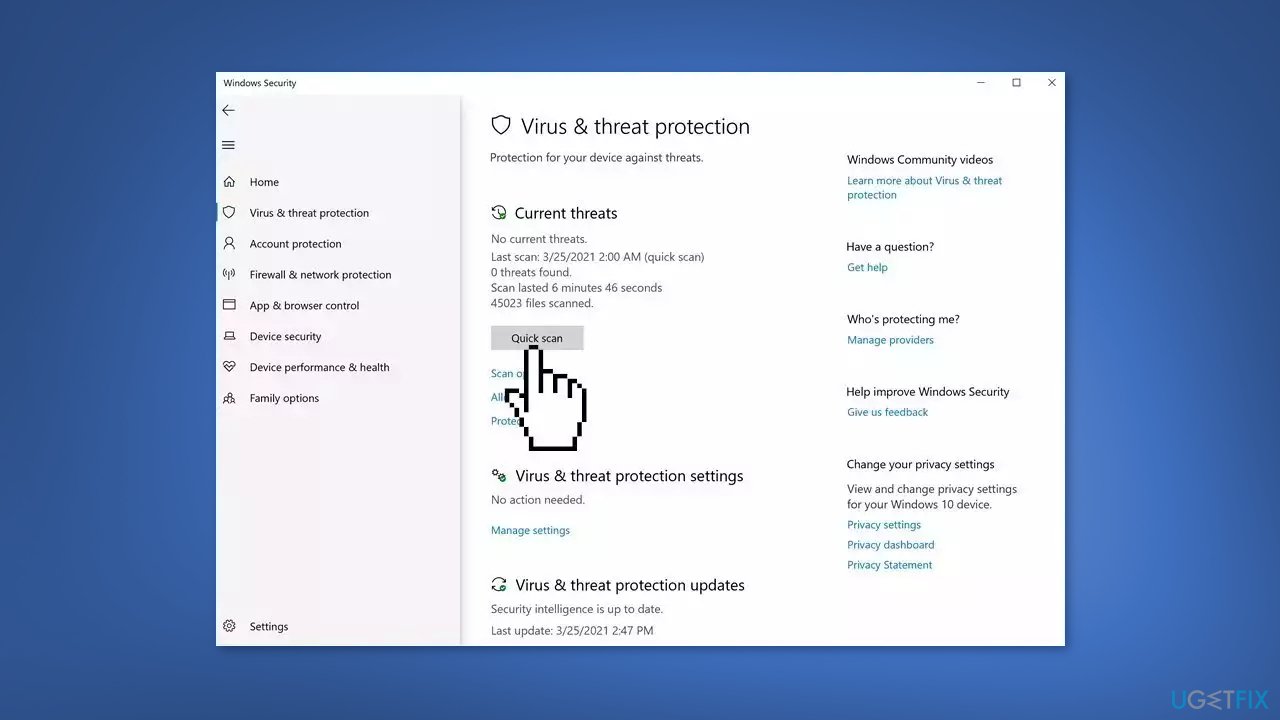
- If you choose Quick scan, Microsoft Defender Antivirus will scan the most vulnerable and commonly infected areas of your computer
- If you choose Full scan, Microsoft Defender Antivirus will scan your entire computer, including all files, folders, and programs
- Click on the Scan now button to start the selected scan type and wait for the scan to complete
- The time it takes will depend on the size of your hard drive and the number of files being scanned
- Once the scan is complete, you will be informed of any detected threats, and you can choose to quarantine or remove them
- If no threats are found, Microsoft Defender Antivirus will inform you that your device is secure
Method 4. Disable Windows Error Reporting Service
- Click on the Windows Start menu or press the Windows key on your keyboard
- Type Services in the search bar and click on Services to open the application
- In the Services window, scroll down and locate Windows Error Reporting Service in the list
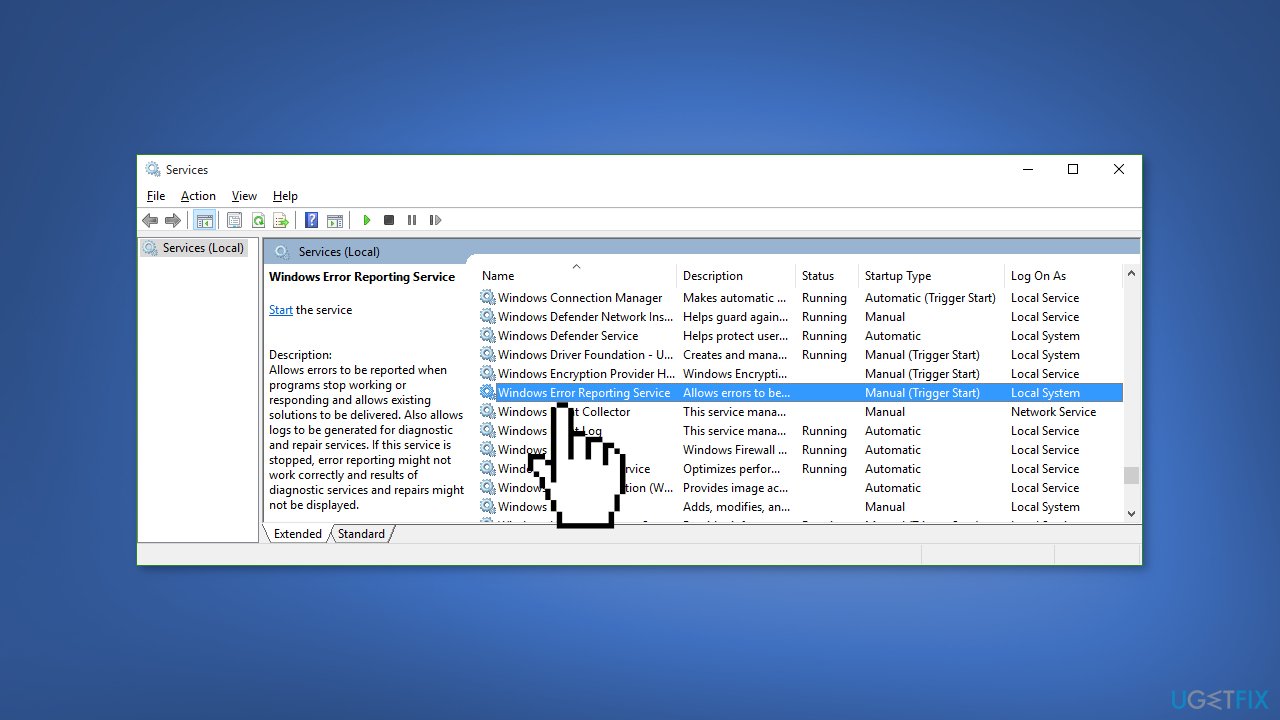
- Double-click on Windows Error Reporting Service to open its Properties
- In the Properties window, locate the Startup type option and click on the drop-down menu
- From the drop-down menu, select Disabled to disable the service
- Click on the Apply button to save your changes
- If the service is currently running, click on the Stop button to stop it
- Click on the OK button to close the properties window
- Close the Services window
- The Windows Error Reporting Service is now disabled on your computer
Method 5. Try Clean Boot
- Open the Search menu, type in system configuration, and press Enter
- Under the Services tab, tick the Hide all Microsoft services box
- Click on Disable all button
- Head over to the Startup tab and click on Open Task Manager
- Select a third-party program and click on Disable at the top
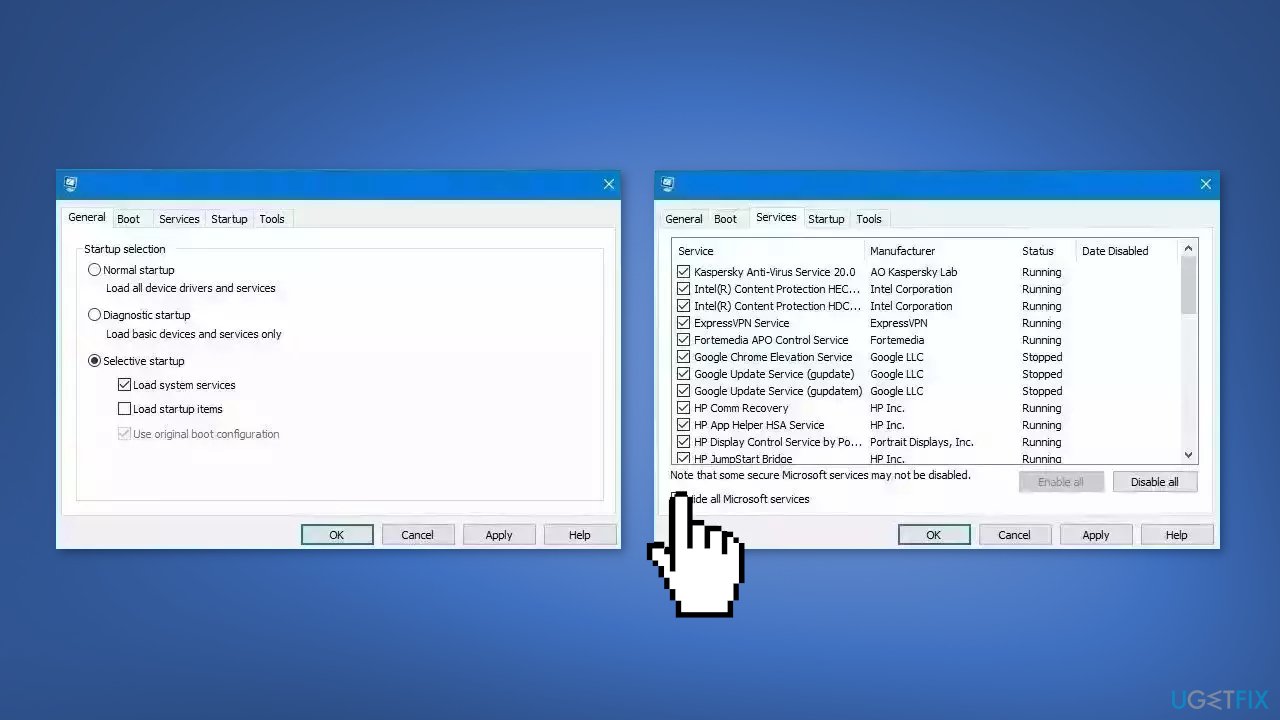
- Repeat this step to disable all third-party apps and programs
- Restart your PC to enter the clean boot state and see if the issue persists
- If the issue disappeared in the clean boot state, then you can be certain that a third-party app is causing it
- Go through all recently installed apps or programs and remove them one by one
Method 6. Use System Restore
System Restore is a feature in Microsoft Windows that allows users to revert their computer's state to a previous point in time. This can be helpful if you have made changes to your system that are causing problems.
- Go to the Start menu, type restore, and click on Create a restore point
- Click System Restore, then follow the prompts until you can select a restore point
- Select the one you want (ideally before the issue started occurring) and go ahead with the process
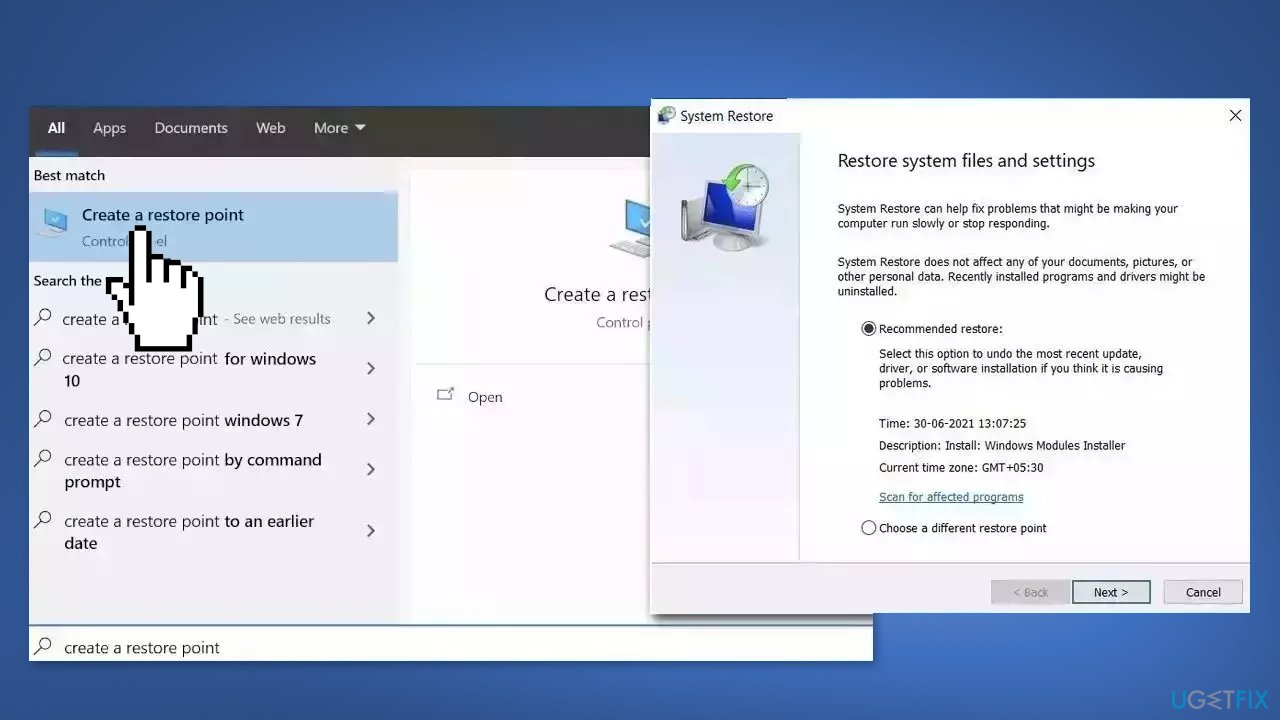
Method 7. Repair Install Windows
- Visit the official Microsoft website to download Windows 11 or Windows 10 Installation Media
- Run the Media Creation Tool and select Create Installation Media for another PC
- Select your USB drive
- Let the Process complete of writing the Installation files to the USB drive
- Click Finish
- On the PC you wish to upgrade, Press Windows + E to open the File Explorer
- Open the Removable drive and click Setup.exe
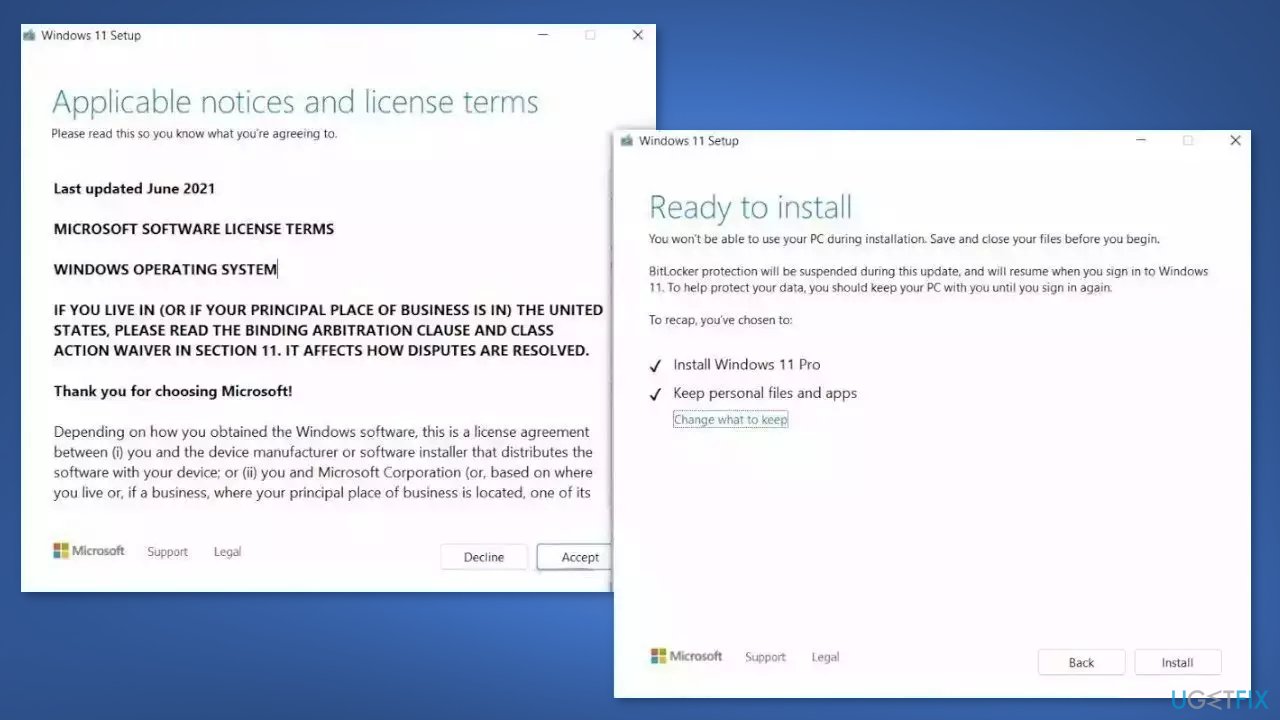
- Accept the license terms on the next screen
- Confirm the Upgrade options – Files, apps and Settings are kept
- Click Install, and the upgrade should start
Repair your Errors automatically
ugetfix.com team is trying to do its best to help users find the best solutions for eliminating their errors. If you don't want to struggle with manual repair techniques, please use the automatic software. All recommended products have been tested and approved by our professionals. Tools that you can use to fix your error are listed bellow:
Protect your online privacy with a VPN client
A VPN is crucial when it comes to user privacy. Online trackers such as cookies can not only be used by social media platforms and other websites but also your Internet Service Provider and the government. Even if you apply the most secure settings via your web browser, you can still be tracked via apps that are connected to the internet. Besides, privacy-focused browsers like Tor is are not an optimal choice due to diminished connection speeds. The best solution for your ultimate privacy is Private Internet Access – be anonymous and secure online.
Data recovery tools can prevent permanent file loss
Data recovery software is one of the options that could help you recover your files. Once you delete a file, it does not vanish into thin air – it remains on your system as long as no new data is written on top of it. Data Recovery Pro is recovery software that searchers for working copies of deleted files within your hard drive. By using the tool, you can prevent loss of valuable documents, school work, personal pictures, and other crucial files.
- ^ Central processing unit. Wikipedia, the free encyclopedia.
- ^ What is the Blue Screen of Death (BSOD)?. Malwarebytes. Cybersecurity Basics.
- ^ Carol Sliwa. The Windows Registry. Computerworld. Business Technology.



